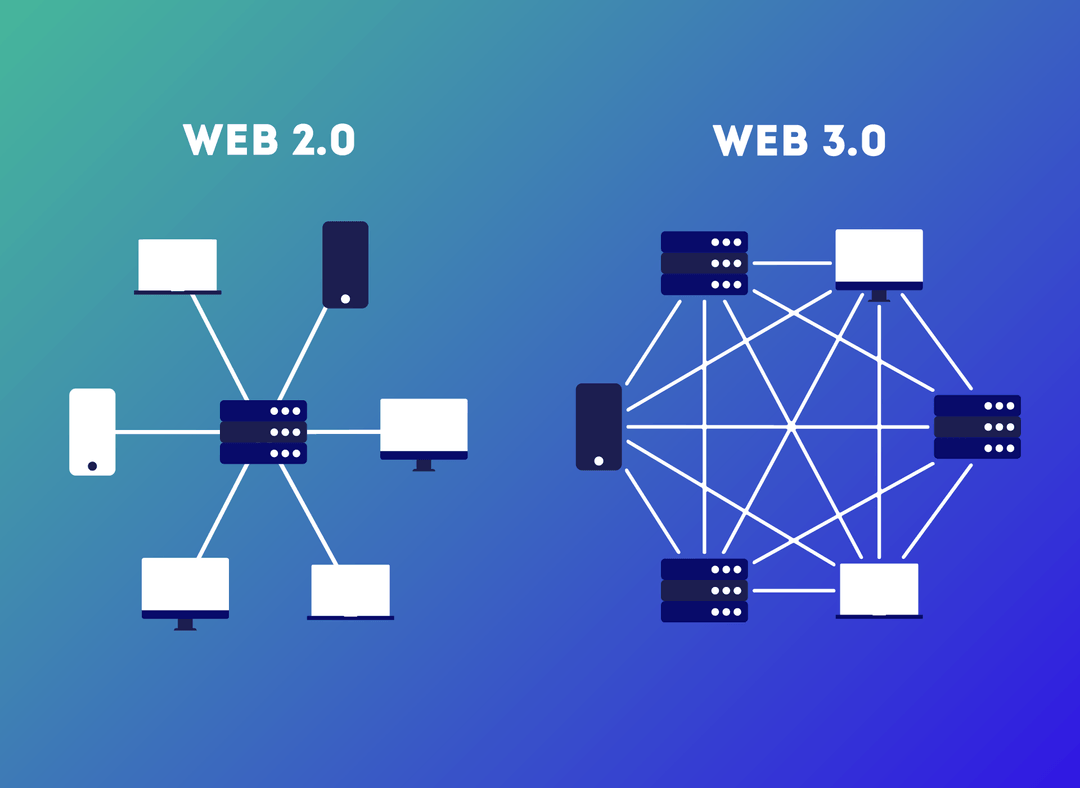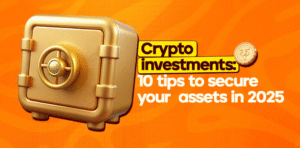You’ve probably heard the term “Web3” buzzing around, especially if you’re curious about crypto or blockchain. But what exactly is it? Web3 is being called the next evolution of the internet, promising a more open, user-controlled, and decentralized digital world. This beginner-friendly guide explains Web3 in simple terms, how it differs from today’s internet, and what it means for you in 2025. Let’s dive in!

What is Web3?
Web3 is a vision for a new version of the internet built on blockchain technology, where users have more control over their data, privacy, and online experiences. Unlike today’s internet (Web2), which is dominated by big tech companies like Google and Meta, Web3 aims to be decentralized, meaning no single entity controls it.
Key Idea: Web3 uses blockchain (like Bitcoin’s tech) to create a transparent, secure internet where users own their digital assets and identities.
Why It Matters: Web3 could give you power over your online data, reduce reliance on tech giants, and open new ways to earn or interact online.
Web1, Web2, and Web3: A Quick Comparison
To understand Web3, let’s see how it compares to earlier internet eras.
1. Web1: The Read-Only Internet (1990–2005)
Web1 was the internet’s first phase, where websites were static pages with text and images. Users could only read content, like an online library.
Example: Think of early Yahoo or basic company websites with no interactivity.
Limit: No user input or social features, just one-way information.
2. Web2: The Social Internet (2005–2020)
Web2 is today’s internet, where users create and share content on platforms like X, YouTube, or Instagram. It’s interactive but controlled by big companies.
Example: You post on X, but X owns your data and can ban your account.
Downside: Tech giants track your data, sell it, and control what you see.

3. Web3: The Decentralized Internet (2020–Now)
Web3 uses blockchain to give users ownership and control. Instead of storing data on company servers, it’s spread across a network of computers, making it secure and transparent.
Example: A Web3 social app might let you own your posts as NFTs, earning crypto for likes.
Goal: Empower users, reduce censorship, and reward creators directly.
Tip: Learn more about blockchain on CoinDesk.
Key Features of Web3
Web3 isn’t just a buzzword—it’s built on specific technologies and ideas. Here’s what makes it unique in 2025.
1. Decentralization
In Web3, no single company or server controls the internet. Data lives on a blockchain, a shared ledger run by many computers (nodes).
Example: A Web3 app like a decentralized X runs on thousands of computers, so it can’t be shut down by one entity.
Benefit: Less censorship and more user freedom.
2. Blockchain and Cryptocurrencies
Blockchain is Web3’s backbone, ensuring secure, transparent transactions. Cryptocurrencies like Ethereum power Web3 apps, letting users pay or earn without banks.
Example: You might buy a digital artwork (NFT) on a Web3 marketplace using Ethereum.
Tip: Explore blockchain basics on Cointelegraph.

3. Digital Ownership (NFTs and Tokens)
Web3 lets you own digital assets like art, music, or virtual land as non-fungible tokens (NFTs) or tokens, stored on the blockchain.
Example: Buying an NFT artwork means you own it, verifiable on the blockchain, not a company’s server.
Benefit: You can sell or trade your assets freely.
4. Decentralized Apps (DApps)
DApps are Web3 applications running on blockchains, not company servers. They’re open-source and user-controlled.
Example: A Web3 game like Decentraland lets you own virtual land and earn crypto, unlike Web2 games controlled by developers.
Tip: Try DApps via wallets like MetaMask.
5. User-Controlled Identity
Web3 uses digital wallets to give you a universal online identity, not tied to Google or Facebook logins.
Example: With a MetaMask wallet, you log into Web3 apps without sharing personal data.
Benefit: More privacy and control over your info.
Why Web3 Matters in 2025
Web3 is gaining traction because it tackles real problems with today’s internet. Here’s why it’s a big deal:
- Privacy: You control your data, not tech giants.
- Earnings: Creators and users can earn crypto for content or activity.
- Freedom: Decentralization reduces censorship and bans.
- Innovation: New apps like DeFi (decentralized finance) and DAOs (decentralized organizations) are reshaping finance and governance.
Example: A Web3 musician can sell songs as NFTs, earning directly from fans without a record label.

Challenges and Risks of Web3
Web3 is exciting but not perfect. Beginners should know these hurdles in 2025:
- Complexity: Using wallets and DApps can feel tricky at first.
- Scams: Fake NFTs or phishing sites target new users.
- Volatility: Crypto prices powering Web3 can swing wildly.
- Regulation: Governments may limit Web3’s growth with new laws.
Tip: Learn scam prevention on Cointelegraph.
How to Get Started with Web3
Ready to explore Web3? Follow these beginner-friendly steps to dive in safely in 2025.
1. Set Up a Digital Wallet
A wallet like MetaMask is your Web3 passport, letting you interact with DApps and store crypto or NFTs.
How to Do It:
- Download MetaMask as a browser extension or app.
- Create a wallet and save your seed phrase offline on paper.
- Add a small amount of Ethereum (e.g., $10) via Coinbase.
Tip: Never share your seed phrase to avoid hacks.
2. Explore Trusted Web3 Platforms
Start with beginner-friendly Web3 apps to see how they work.
Recommended Platforms:
- OpenSea: Buy or sell NFTs like digital art.
- Decentraland: A virtual world where you own land.
- Uniswap: Swap cryptocurrencies without a middleman.
Example: Browse NFTs on OpenSea with your MetaMask wallet.

3. Start Small and Learn
Web3 can be overwhelming, so begin with small experiments to build confidence.
How to Do It:
- Buy a low-cost NFT (e.g., $5) on OpenSea to understand ownership.
- Try a Web3 game like Decentraland with a small crypto amount.
- Read Web3 basics on CoinDesk.
Example: Spending $10 on an NFT teaches you Web3 without risking much.
4. Secure Your Web3 Assets
Web3 gives you control, but also responsibility. Protect your crypto and NFTs from scams or hacks.
How to Do It:
- Enable 2FA on exchanges like Coinbase with Google Authenticator.
- Use a hardware wallet like Ledger for large amounts.
- Verify URLs (e.g., “opensea.io,” not “opensea.co”).
- Avoid clicking links from unknown X posts.
Example: In 2024, phishing scams stole millions in NFTs. A Ledger wallet keeps your assets safe.
5. Stay Informed and Join Communities
Web3 evolves fast. Stay updated and learn from others to avoid mistakes.
How to Do It:
- Follow Cointelegraph for Web3 news.
- Join Reddit’s r/Web3 or r/cryptocurrency for tips.
- Explore projects on CoinGecko for legitimacy.
Example: Reddit communities warn about fake Web3 projects, saving you from scams.
What to Watch Out For in Web3
Web3 is promising but risky. Here’s how to stay safe:
- Scams: Fake NFT drops or DApps can steal your crypto.
- High Fees: Ethereum’s “gas fees” for transactions can be costly.
- Learning Curve: Wallets and DApps take time to master.
Tip: Start with small transactions to learn without big losses.
Conclusion
Web3 is the internet’s next chapter, offering a decentralized, user-controlled future with blockchain, NFTs, and DApps. While it’s complex, beginners can explore it safely by starting with a MetaMask wallet, trying platforms like OpenSea, and learning from CoinDesk. Secure your assets with a Ledger wallet and stay updated via Cointelegraph. With these steps, you’ll step into Web3’s exciting world in 2025 with confidence!






















